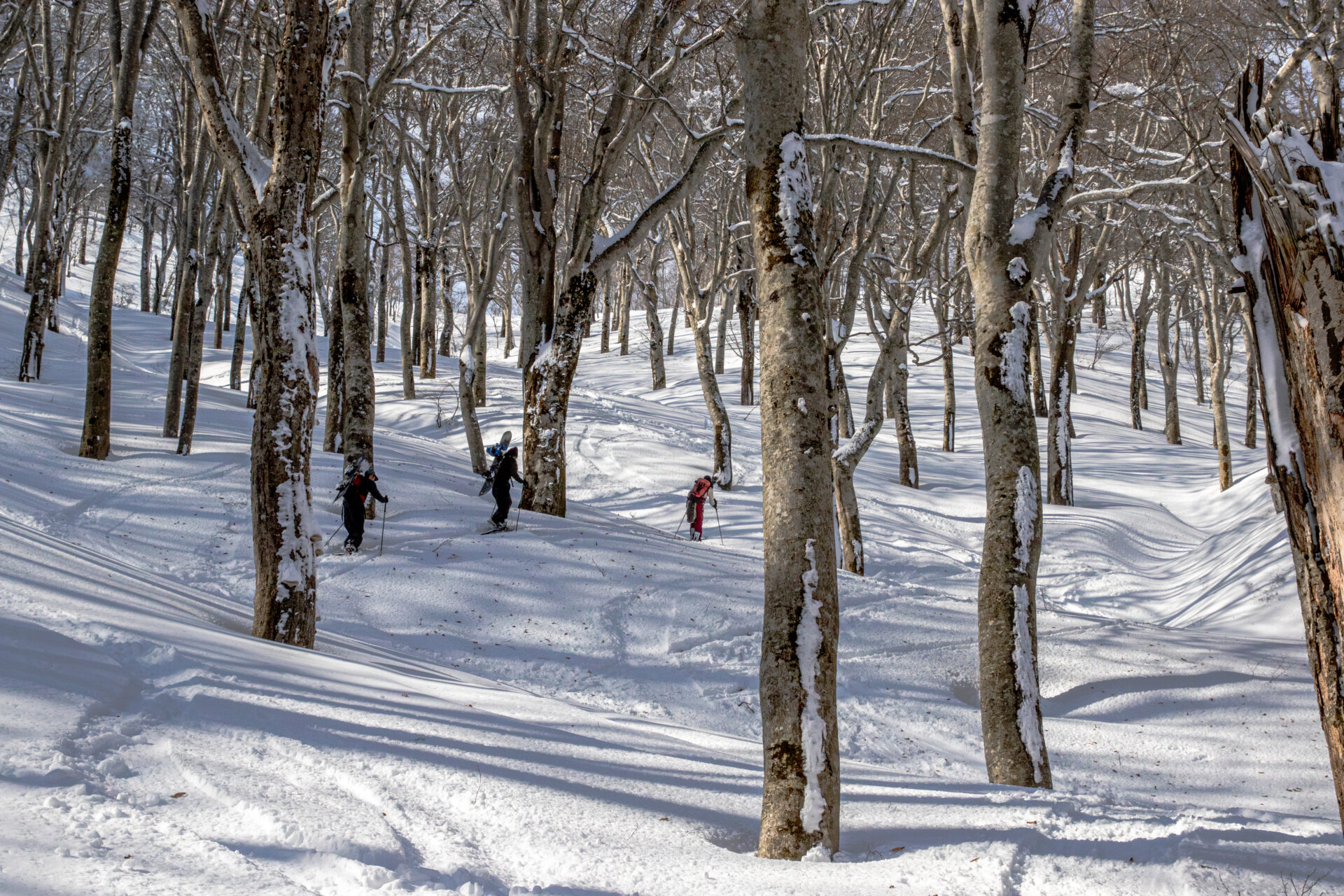In search of a place for backcountry skiing accessible from Tokamachi City for a day trip, I visited Mt. Nabekura with my wife and friends. Situated on the border between Niigata and Nagano Prefectures, Mt. Nabekura stands as the highest peak of the Sekita Mountain Range. With vast stretches of national forests, the Sekita Mountain Range's ridgeline spans 110 kilometers, renowned as part of the Shin-etsu Trail. Historically, this range served as a crucial passage connecting Shinshu and Echigo provinces. It's been said that it was a path for the propagation of Buddhism by Saint Shinran and a strategic route for military campaigns, including those led by Uesugi Kenshin during the Warring States period.
Upon my visit, the temperature was mild, making the ascent comfortable. Despite less snow than usual, there was a sense of impending spring in the air as we aimed for the summit.
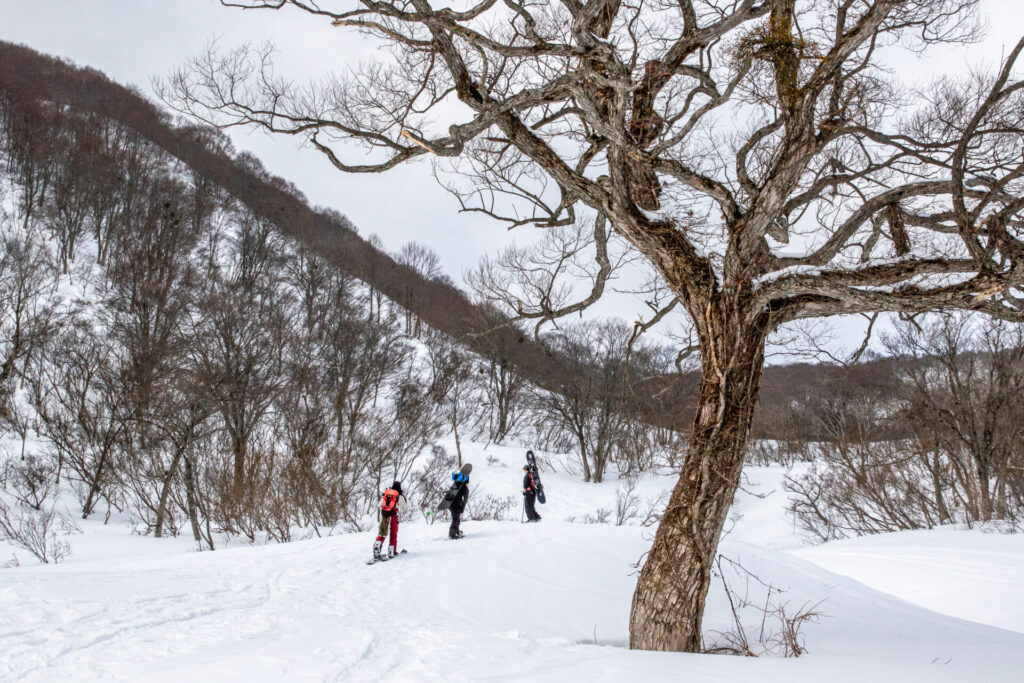
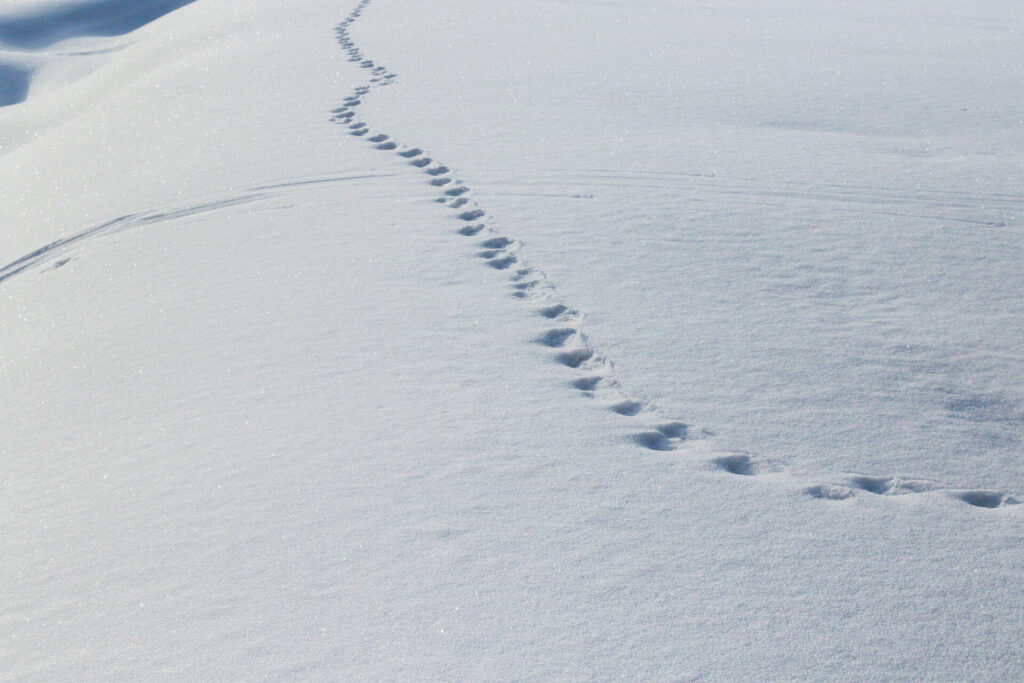
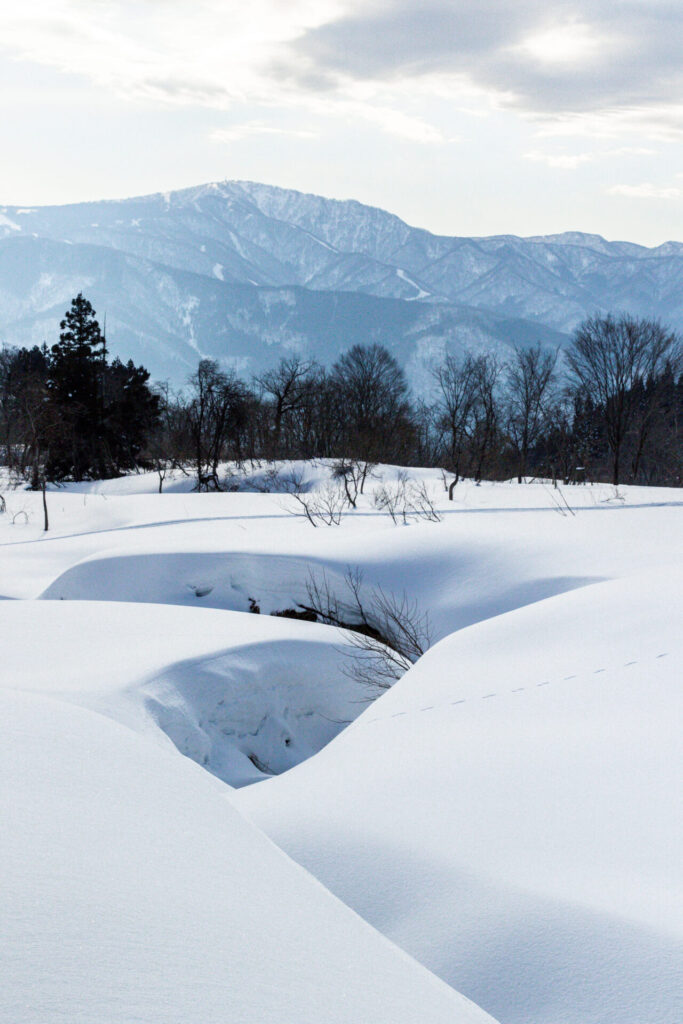
What captivates on Mt. Nabekura is the sprawling beech forest. While Tokamachi City in Niigata is also known for its beautiful beech forests, and remarkable beech forests grace the route to Amamizuyama, part of the Shinetsu Trail, it seems that from Amamizuyama to the Sekita Mountain Range, the area is dominated by beech forests. I distinctly recall the sudden expanse of beech forest along the ascent, marking a change in scenery.
Mt. Nabekura is well-known for its beech forests, yet it has faced proposals for logging in the past. In September 1986, a logging plan for Mt. Nabekura was announced by the Iiyama Forestry Office in Nagano, only to be halted due to local opposition. There were also plans for resort development centered around Mt. Nabekura, with a private company initiating ski resort surveys in 1972, but withdrew in 1977 citing economic recovery delays. In 1990, there were discussions of ski resort development led by the city of Iiyama and private enterprises, but they withdrew after the bursting of the bubble economy in 1992. This history reflects the clash between economic advancement and environmental conservation, shaping the place's background.
Quietly ascending amidst the beech forest, it's clear that this mountain is beloved by many. The numerous ski tracks already visible evoke a sense of eagerness to join in.
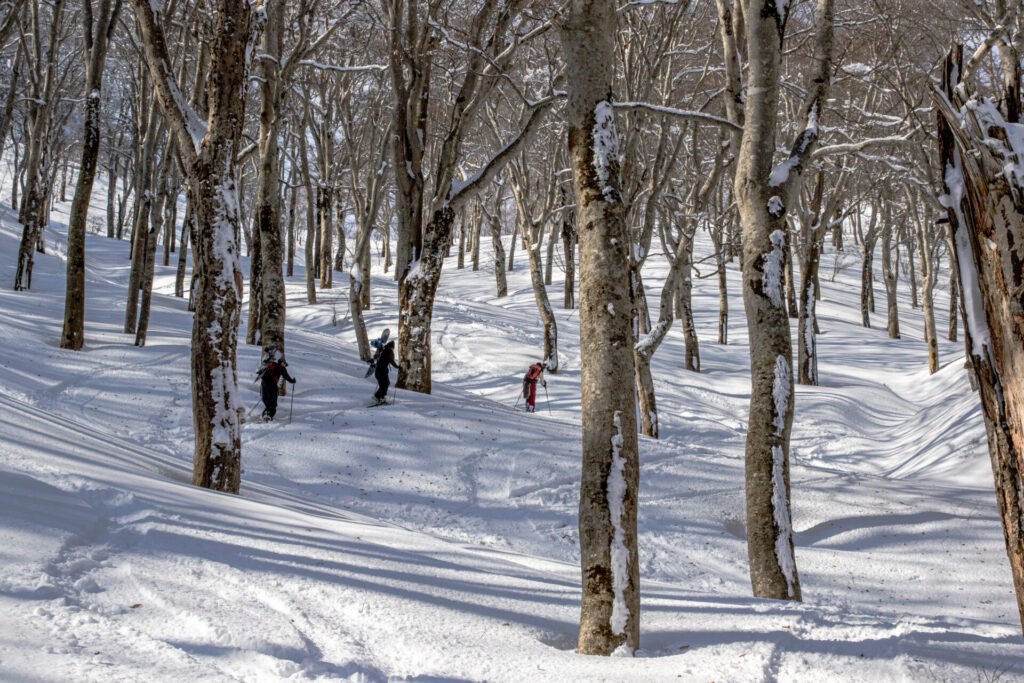
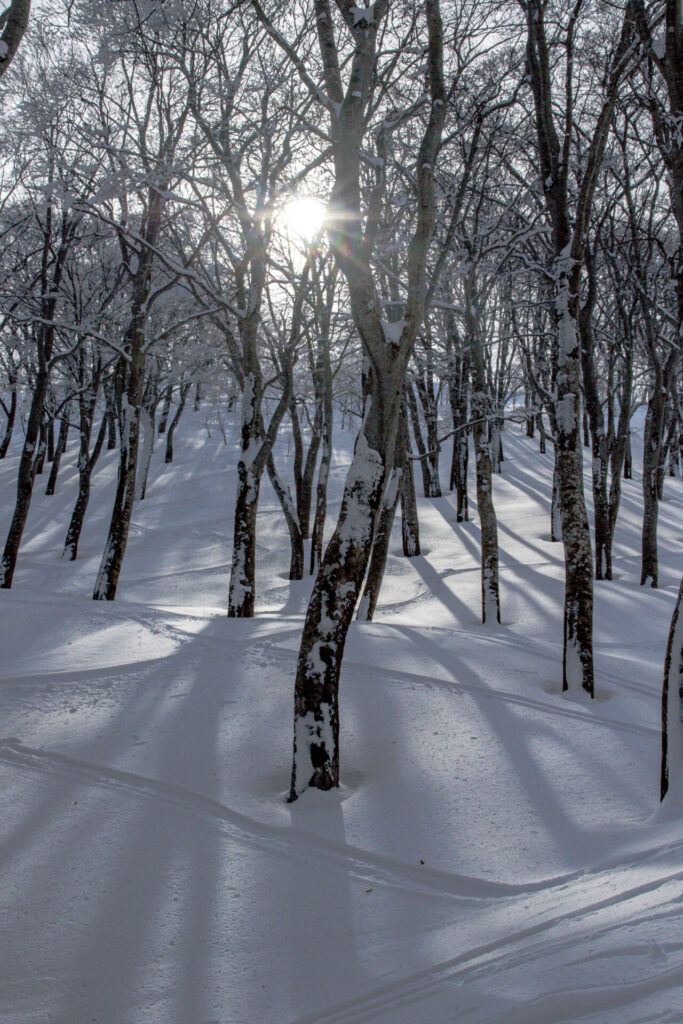
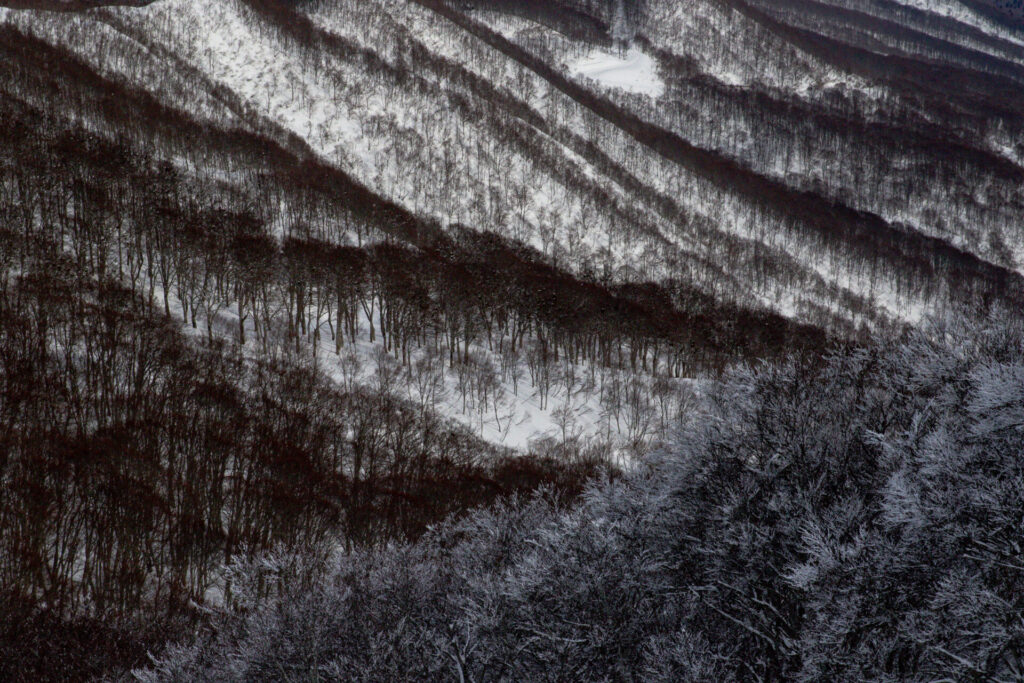

Beech forests in heavy snow regions not only contribute to the beautiful landscape but also have a significant impact on local agriculture. Beech trees store water, and when the snow melts in spring, the beech-covered Mt. Nabekura collects and stores this meltwater, irrigating the rice fields in nearby villages during planting season. Among those who have lived at the foot of the mountain and cultivated rice for generations, there's a saying: "One beech tree stores enough water for one tan(反) (1反 = 10 ares) of rice fields."
Within the beech forest, the spacing of the trees was just right, making it an excellent course for tree runs.
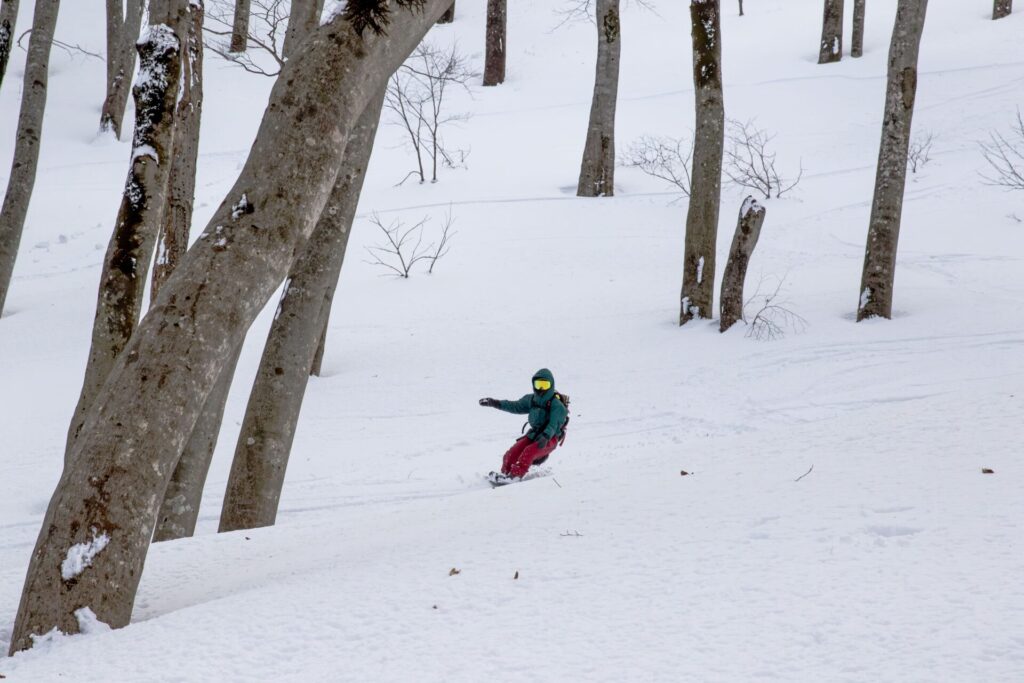
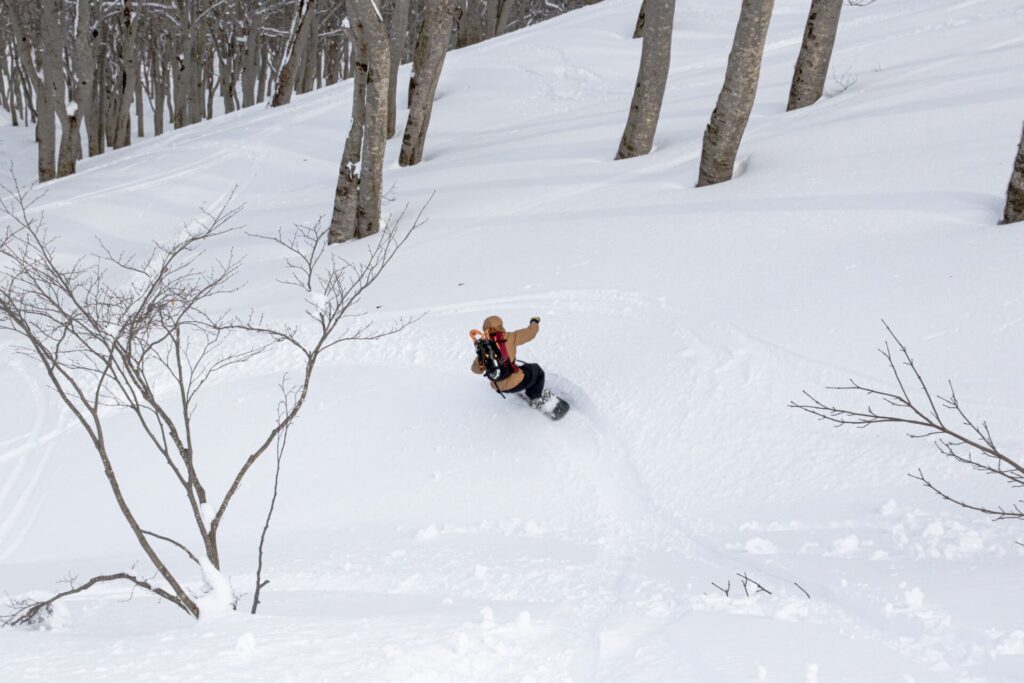
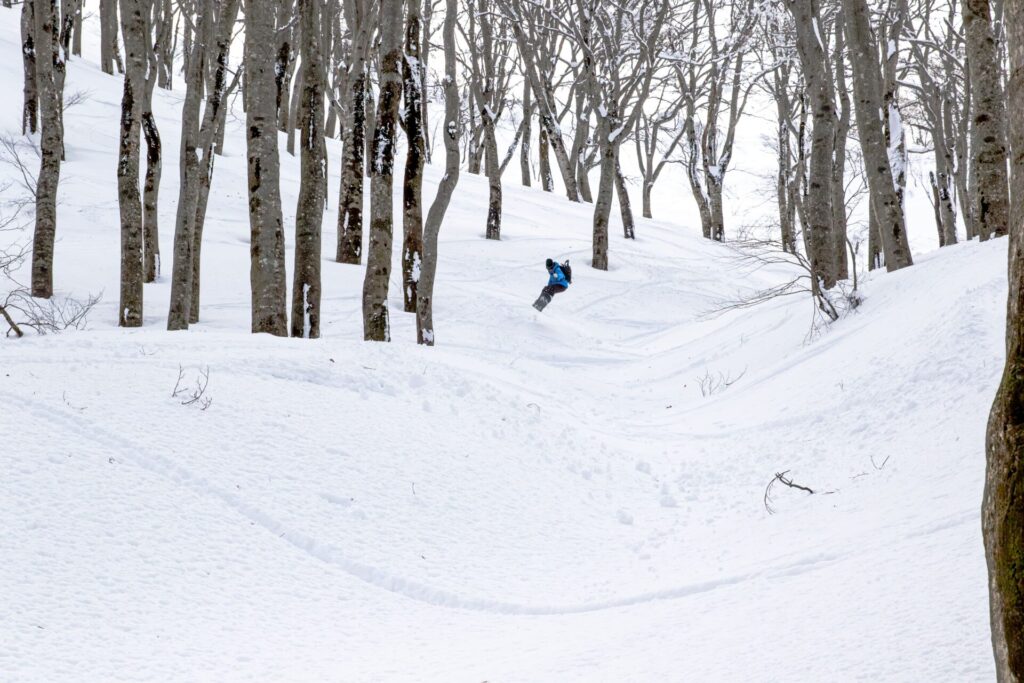
Safely descending to the base, the journey concludes. It seems intriguing to return for an ascent in a different season.

